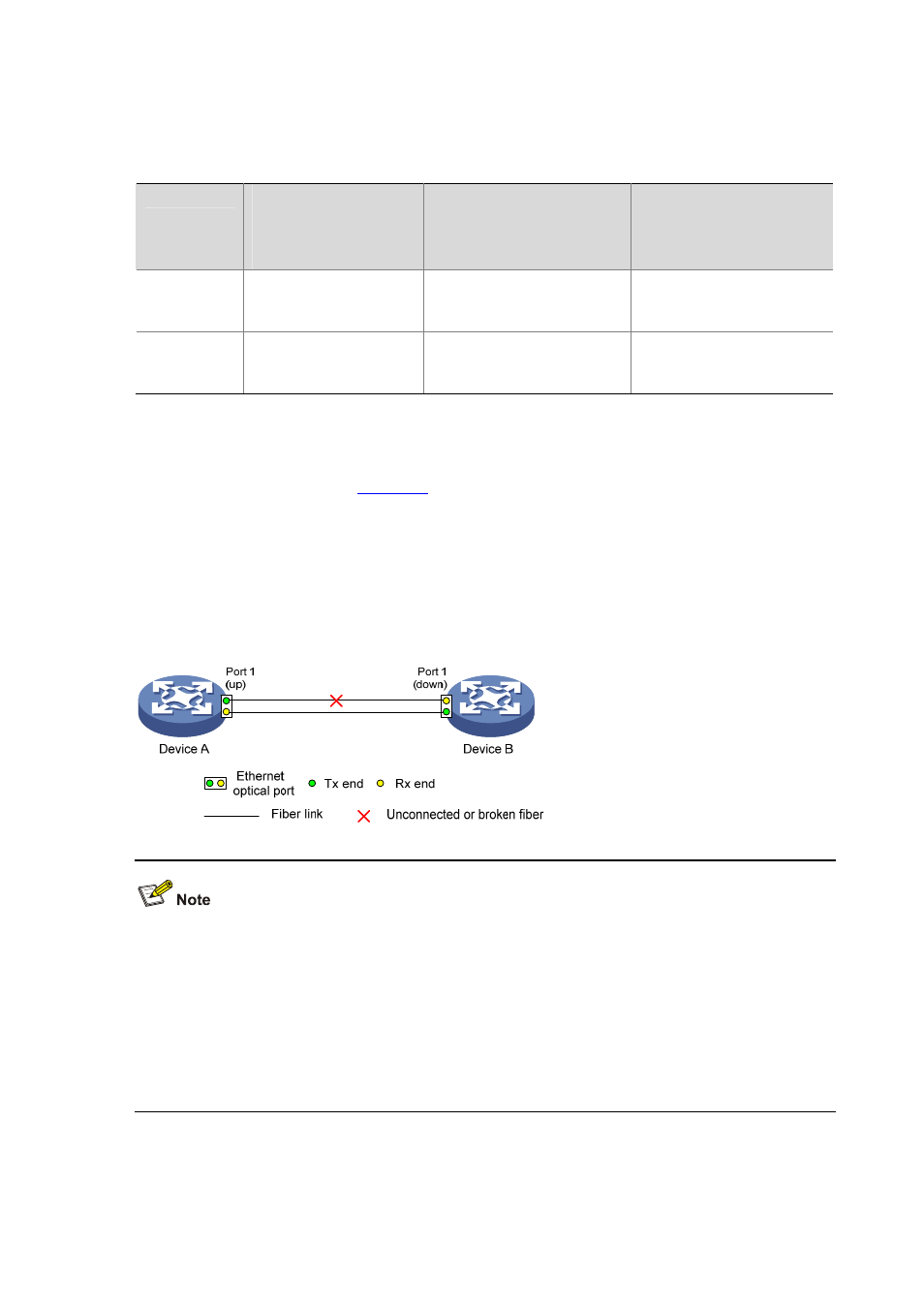H3C Technologies H3C S7500E Series Switches User Manual
Page 55

6-5
neighbor. If no Echo packet is received from the neighbor when the Echo timer expires, the
device transits to the Disable state.
Table 6-3 DLDP mode and neighbor entry aging
DLDP mode
Detecting a neighbor
after the corresponding
neighbor entry ages out
Removing the neighbor
entry immediately after the
Entry timer expires
Triggering the Enhanced
timer after an Entry timer
expires
Normal DLDP
mode
No Yes
No
Enhanced
DLDP mode
Yes No
Yes
The enhanced DLDP mode is designed for addressing black holes. It prevents the situations where
one end of a link is up and the other is down. If you configure the forced speed and full duplex mode
on a port, the situation shown in
may occur, where the port on Device B is actually down but
its state cannot be detected by common data link protocols, so the port on Device A is still up. In
enhanced DLDP mode, however, the port on Device A tests the peer port on Device B after the Entry
timer concerning the port on Device B expires. The port on Device A then transits to the Disable state if
it receives no Echo packet from the port on Device B when the Echo timer expires. As the port on
Device B is physically down, it is in the Inactive DLDP state.
Figure 6-2 A scenario for the Enhanced DLDP mode
z
In normal DLDP mode, only fiber cross-connected unidirectional links can be detected.
z
In enhanced DLDP mode, two types of unidirectional links can be detected. One is fiber
cross-connected links, and the other refers to fiber pairs with one fiber not connected or broken.
To detect unidirectional links that are of the latter type, you must configure the ports to operate at
specific speed and in full duplex mode. Otherwise, DLDP cannot take effect. When a fiber of a
fiber pair is not connected or is broken, the port that can receive optical signals is in Disable state;
the other port is in Inactive state.
